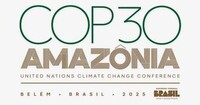An error worth over two billion euros has been discovered in the Ministry of Defense's accounts
The news we're dedicating this editorial to comes from a far from unreliable source: Rivista Italiana Difesa (RID). One of the most authoritative publications in the military sector, it discovered a new figure in the 2025-2027 Multi-Year Programming Document (DPP) : €2.4 billion for future drones. This high and unexpected figure was highlighted in an RID article on October 10, 2025: "The main new development in the 2025-2027 Multi-Year Programming Document for Defense is the allocation of €2.4 billion for the Air Force's Remotely Piloted Aircraft program. This program was already included in the previous DPP, but only €71 million was allocated."
The Ministry of Defense had to publish a correction . And the figure dropped 31-fold. Let's see by how much.
The error costing over two billion euros
It all stems from the 2025-2027 DPP, in the section dedicated to drones. An unusual figure of €2.4 billion raised eyebrows among experts. The Ministry of Defense called it a "mere transcription error" and corrected the figure, dropping it to €76 million for the purchase of four ASTORE drones produced by Leonardo. In short: from €2,400 to €76 million.
A typo? Perhaps. But not all doubts are dispelled.
Indeed, RID published an article titled: "Drones for the Air Force: the Ministry of Defense's errata corrige arrives, but something doesn't add up. And the money for the national adjunct?"
But what is the national adjunct?
Adjuncts are unmanned aircraft that operate in conjunction with Tempest under the GCAP program.
They serve to extend the system's range and firepower and to carry out risky missions (reconnaissance, electronic warfare, attack, diversion). But they also protect the Tempest by reducing the pilot's exposure.
Italy aims to play a key role, with Leonardo, in producing a prototype of such a national adjunct, but doing so requires significant state-backed investment.
The numbers don't add up
In the DPP, on page 87, we read that "thanks to the 2025 Budget Law, €3.2 billion has been allocated for the development and purchase of unmanned systems," i.e., drones and unmanned vehicles. A graph explains that almost 93% of these funds , equal to €2.9 billion , are dedicated to aerial drones.
Yet, even recalculating all the updated items, that figure doesn't arrive . Without the famous 2.4 billion from the "corrected" program, the total is much lower.
The errata corrige does not seem to add up, as experts point out.
The mystery of the “national adjunct”
There is another part of the story that raises more strategic questions.
RID explains that the loss of those funds could mean the absence of appropriations for the “national adjunct” , a project linked to the GCAP (Global Combat Air Programme), that is the new sixth-generation fighter Tempest , developed together with the United Kingdom and Japan.
But what is this adjunct ?
As already mentioned, it is an advanced drone that flies alongside the piloted jet , capable of operating online, collecting data and – if necessary – hitting targets, reducing the risks for human pilots.
A concept of “shared digital warfare” that now guides the most modern military programs.
Except that, in the Italian case, the “national adjunct” does not yet have public funding : according to RID, Leonardo is carrying it forward with its own funds , awaiting state resources.
A disturbing sign
This episode, apparently technical, opens up a couple of further reflections.
On the one hand, it shows limited transparency – as already noted by Milex – in official Defense documents.
On the other hand, it reveals an increasingly costly arms race , the true costs of which are yet to be quantified. We're signing blank cheques.
And the questions remain
If the numbers don't add up, if the correct numbers today will resurface tomorrow when we least expect them to finance the national adjunct , what should be done? What real democratic control should be demanded over Italian military spending? And above all: how can we reconcile this rush to "intelligent" warfare with the social, environmental, and humanitarian emergencies that remain dramatically underfunded?
Articoli correlati
 Il sostegno del Presidente della Repubblica alle attuali spese militari
Il sostegno del Presidente della Repubblica alle attuali spese militariNo, Presidente Mattarella
20 December 2025 - Mao Valpiana In Brasile ha preso il via la conferenza ONU per contrastare i cambiamenti climatici
In Brasile ha preso il via la conferenza ONU per contrastare i cambiamenti climaticiAlla COP30 Lula contro il riarmo e per la pace
“Se quanti fanno la guerra fossero qui a questa COP, si renderebbero conto che è molto più economico investire 1,3 trilione di dollari per porre fine al problema climatico piuttosto che spendere 2,7 trilioni di dollari per fare la guerra, come hanno fatto l’anno scorso”, ha dichiarato Lula.11 November 2025 - Redazione PeaceLink Cosa è l’“adjunct nazionale” del programma GCAP
Cosa è l’“adjunct nazionale” del programma GCAPScoperto un errore da oltre due miliardi di euro nei conti del Ministero della Difesa
Era contenuto nel programma “Aeromobili a Pilotaggio Remoto per l’Aeronautica Militare”. Un programma da 2,4 miliardi di euro che ha attirato l'attenzione degli analisti militari. Poi vi è stato un "errata corrige" del Ministero e la cifra è crollata di 31 volte. Ma i conti non tornano.2 November 2025 - Alessandro Marescotti Intanto il Ministero dell’Istruzione annulla il corso "la scuola non si arruola”
Intanto il Ministero dell’Istruzione annulla il corso "la scuola non si arruola”Celebriamo un 4 novembre che scelga di camminare su strade di pace
La sciagurata voglia di guerra delle classi dirigenti politiche italiane ed europee non corrisponde alla volontà di pace dei propri popoli. Crediamo che i ragazzi e le ragazze abbiano il diritto di pensare ad un mondo senza guerre esenza armi2 November 2025 - Donne in Nero - Piombino

Sociale.network